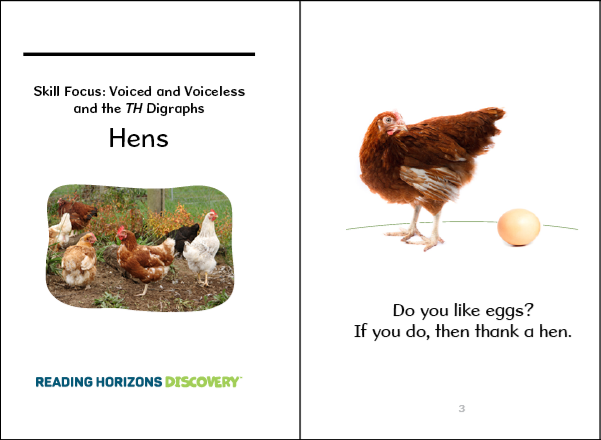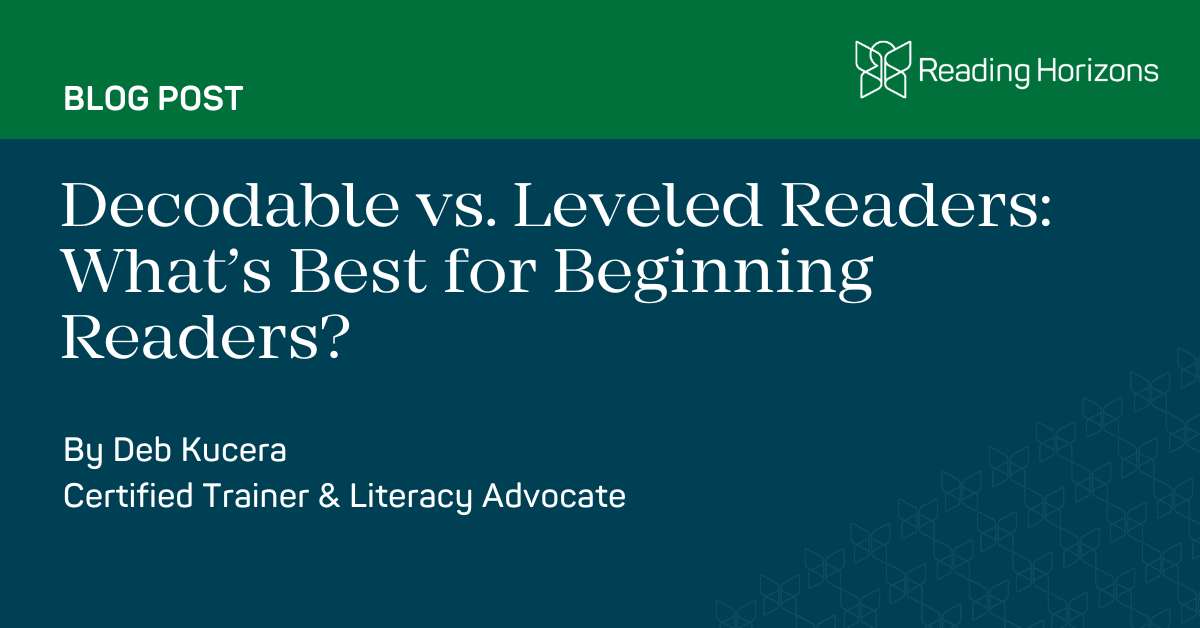By Deb Kucera, Certified Trainer & Literacy Advocate
As someone who has spent years supporting early readers and guiding educators through literacy shifts, colleagues often ask me: Should we use decodable or leveled texts with our beginning readers? The answer isn’t always simple, but the research is clear: the texts we put in front of early readers can either reinforce or unintentionally undermine the skills we’re teaching. With so many tools and approaches available, it’s critical to pause and ask which materials truly support how students learn to read.
In this blog, we’ll unpack the differences between decodable and leveled readers, examine what the science of reading tells us, and offer practical guidance for making thoughtful choices that support foundational literacy.
Why Decodable Texts Matter
Decodable texts aren’t just an option but a cornerstone of effective early literacy instruction. When aligned with a clear phonics scope and sequence, they provide students with the structured, skill-based practice they need to become confident, independent readers. They allow students to apply the phonics skills they’re learning in the classroom to connected text. That connection is everything.
On the other hand, leveled readers often emphasize predictable patterns and encourage guessing based on pictures or context. These strategies may look like reading, but they don’t build the foundational decoding skills our students need. That’s why leveled readers should play only a limited, strategic role—if any—during the earliest stages of reading development.
Decoding Alignment Over Text Complexity
When selecting texts for beginning readers, I prioritize decoding alignment—not text complexity. If students aren’t applying the phonics skills they’re learning each day, those skills remain in isolation. They may memorize a letter or sound in a lesson, but without the chance to transfer that knowledge into real reading, it doesn’t stick.
When texts are thoughtfully aligned with the instructional sequence, students build fluency, accuracy, and—most importantly—confidence.

Find free decodable text and more resources in The Science of Reading Collective.
What Makes a Decodable Reader High-Quality?
I look for a few key things when choosing decodable readers:
- Aligned with a clear, logical phonics scope and sequence
- Repetition of the target phonics skill
- Natural-sounding language (as much as possible!)
- No “tricky” words that haven’t been taught yet
When texts are aligned this way, we significantly reduce the cognitive load on our students. They can focus their attention where it matters—on applying the skill they’ve just learned—rather than trying to manage a text full of unfamiliar patterns.
Effective decodable readers mirror the curriculum’s phonics instruction so closely that students immediately apply what they’ve learned. The result? Stronger reading foundations and more joyful learning experiences.
Confidence Grows With the Right Fit
I’ve seen the impact of quality decodable texts again and again. I’ve watched students who once struggled with reading light up when they realized they could decode every word in a book. I’ve heard students say, “I feel like a real reader!”—and they are. Students “devour” text that is the right fit, and they aren’t frustrated when they come to a point of difficulty in reading the text. Instead, they can use the skills they have learned to sound the word out and read the text successfully. What a sense of accomplishment!
That moment of empowerment is everything. When students experience success with text, their confidence skyrockets. They no longer rely on guessing or skipping words—they’re reading.
Do Leveled Readers Still Have a Place?
Yes—but very sparingly and only with clear intention. A leveled reader might sometimes align with a student’s current needs, but this requires deep instructional knowledge. It’s not about defaulting to a level—it’s about targeting specific skills within a text that match the student’s current learning.
However, the bulk of early reading practice should be grounded in decodable text.
Supporting Teachers Through the Shift
Transitioning from leveled readers to decodables can be uncomfortable at first—for both teachers and students. But I always tell teams to stick with it. Give it a real chance.
When teachers see students applying phonics skills independently—decoding instead of guessing, tackling words instead of avoiding them—that resistance fades. Students become less reliant on cues like pictures and more focused on the words. That’s when real growth happens.
I’ve found it helpful to remind teams that once students have learned and practiced their foundational phonics skills, they will be ready to take on a wider variety of texts. But until then, we owe it to them to keep their practice aligned and intentional.
Dispelling Misconceptions About Decodables
One of the most common misconceptions I hear is that decodable texts aren’t “real” books—sounding robotic or lacking engagement. My response? Students don’t feel that way at all.
Students love decodable books because they can read them. The joy of accessing a book independently far outweighs any perceived “unnaturalness” in the text. And when decodables are written well, the stories can be fun, playful, and deeply satisfying to read.
Final Thoughts: From Guessing to Growth
When we shift our instruction from leveled readers to decodable texts, we do more than just change materials—we change outcomes. We’re empowering students with the tools they need to read successfully and independently. We’re building confident readers who no longer rely on guesswork but instead trust their own growing skills.
And that’s the goal: to give every student the strongest possible foundation in reading so they can confidently take on any text at any time.
Ready to Rethink Early Reading Materials?
If your school or district is exploring the shift to decodable texts—or simply wants to strengthen foundational literacy—now is the time to take action. Start by evaluating your current materials, aligning instruction with phonics skills, and investing in high-quality decodable readers that give students the practice they need to grow. Need support making the transition? Let’s build confident readers together—one decodable word at a time.

